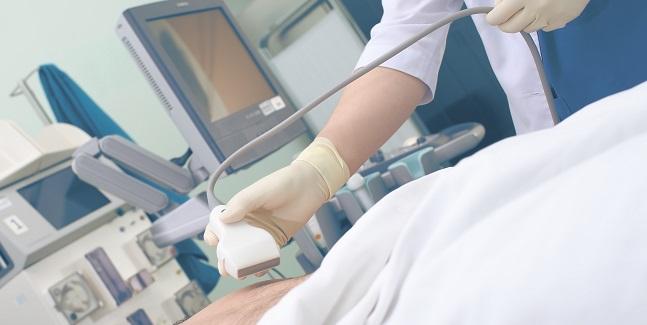Echo Features Pinpoint Those Unlikely to Benefit From MitraClip
Severe LV impairment, hemodynamic instability, and RV impairment and/or severe pulmonary hypertension may signal futility for a clip.

Patients treated with the MitraClip (Abbott) at one of three European hospitals were more likely to survive and avoid rehospitalization if they fit a “COAPT-like profile” based on echocardiography parameters, researchers reported in JACC: Cardiovascular Interventions last week.
“We wanted to dispel the concept of nonapplicability of these criteria in the real world,” Adamo told TCTMD in an email. Not only were more than two-thirds of the patients who’d been treated with the clip COAPT-like but “these patients had a significantly better outcome compared to non-COAPT-like ones,” she said.
In Common With COAPT
The question of which mitral regurgitation (MR) patients might be best suited to percutaneous repair using the MitraClip has been complicated by the fact that the COAPT trial was hugely positive while the MITRA-FR trial was not. That’s led to 2 years’ worth of speculation and analyses trying to understand who among the trial populations appeared to benefit from the procedure. A COAPT analysis confirmed that patients in the trial with “disproportionate” MR were more likely to benefit from a clip, but a similar retrospective analysis of MITRA-FR participants did not reach the same conclusions.
Adamo and colleagues looked at death as well as a combined endpoint of death/heart failure hospitalization at 2 and 5 years among 304 patients who underwent clip implantation at hospitals in Italy and Portugal. Patients had to fulfill all three “COAPT criteria” to be considered COAPT-like, whereas patients having one or more of these three complicating factors were deemed to be “non-COAPT-like” and served as the comparator group.
In all, 65% of patient population fell into the COAPT-like group and had greater all-cause survival and freedom from the combined endpoint at both 2 years and 5.
Outcomes According to COAPT-Like Profile
|
|
COAPT-Like |
Non-COAPT-Like |
P Value |
|
Survival at 2 Years |
76% |
55% |
< 0.001 |
|
Freedom From Death/HF Hospitalization at 2 Years |
67% |
47% |
< 0.001 |
|
Survival at 5 Years |
49% |
25% |
< 0.001 |
|
Freedom From Death/HF Hospitalization at 5 Years |
40% |
18% |
< 0.001 |
Among the non-COAPT-like patients, the number of qualifying criteria didn’t matter. Left LV impairment tended to be associated with later outcomes, whereas RV impairment, pulmonary hypertension, and hemodynamic instability tended to have an earlier impact.
The findings, say Adamo and colleagues, represent another step towards identifying patients who would best benefit from therapy, as well as those who won’t. “Further investigations are needed to better elucidate the role of COAPT exclusion criteria in predicting outcome after MitraClip and the possible complementary effect of medical therapy,” they conclude.
Asked why their cohort appeared to show a benefit when COAPT criteria were retrospectively applied, whereas the recent MITRA-FR analysis did not, Adamo pointed to differences in the types of criteria considered. “In the MITRA-FR subanalysis the authors considered only LV dimensions and MR degree to stratify their population, which is quite limiting,” she said. “We showed that right ventricular function, tricuspid regurgitation, pulmonary hypertension, and hemodynamic instability are [also] important criteria to consider in the patient selection for MitraClip. “
Commenting on the analysis for TCTMD, Michael Mack, MD (The Heart Hospital Baylor, Plano, TX), COAPT co-principal investigator (PI), observed that the study had a number of shortcomings but “nonetheless . . . does provide some external validation of the reasons why the COAPT trial was positive and the MITRA-FR trial was not.”
That being said, Mack wrote in an email, the paper does not address “the most common explanation” for the discrepancy, namely the concept of disproportionate versus proportionate MR put forward by Milton Packer, MD, and Paul Grayburn, MD (Baylor University Medical Center, Dallas, TX), with disproportionate MR defining a “responder population” that happened to be more common in COAPT.
The fact that Adamo and colleagues identify “non-COAPT-like subjects” as being more likely to have MR 4+ and larger effective regurgitant orifice area, he continued, “is at odds with that concept,” since “disproportionate” means greater severity of MR with less dilation of the left ventricle.
“This study does show that the ‘COAPT-like patients’ had less LV dilation but also less MR, so this is not totally ‘clean,’ Mack said. “Nonetheless, I think you can say in general that it does provide some further insight into a responder population for MitraClip and that those patients with greater degrees of left ventricular dysfunction, right ventricular dysfunction, and pulmonary hypertension would not be expected to respond as well, and that guideline-directed medical therapy should be optimized before MitraClip treatment.”
Like Mack, JoAnn Lindenfeld, MD (Vanderbilt Heart and Vascular Institute, Nashville, TN), also a COAPT co-PI, said in an email that the analysis “is helpful to confirm that COAPT-like patients did appear to have good outcomes, but since [it’s] not randomized, is only mildly helpful.”
Shelley Wood was the Editor-in-Chief of TCTMD and the Editorial Director at the Cardiovascular Research Foundation (CRF) from October 2015…
Read Full BioSources
Adamo M, Fiorelli F, Melica B, et al. COAPT-like profile predicts long-term outcomes in patients with secondary mitral regurgitation undergoing MitraClip. J Am Coll Cardiol Intv. 2020;Epub ahead of print.
Disclosures
- Adamo reports having no relevant conflicts.
- Mack reports receiving research support from Abbott, Edwards Lifesciences, Gore, and Medtronic and serving as a trial co-PI or study chair for Abbott, Edwards Lifesciences, and Medtronic.
- Lindenfeld reports consulting for Boehringer-Ingelheim, Abbott Vascular, Relypsa, Impulse Dynamics, Edwards Lifesciences, CVRx, and VWave, as well as research grants from AstraZeneca, the American Heart Association, and the National Institutes of Health.


Mohamed Seleem